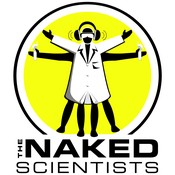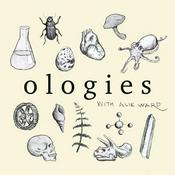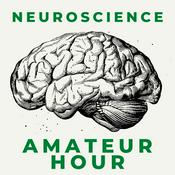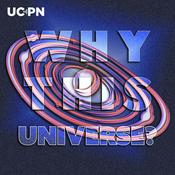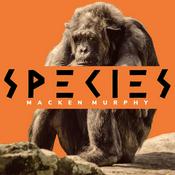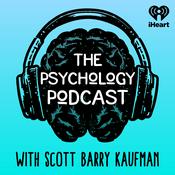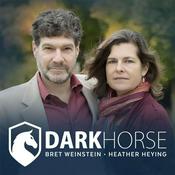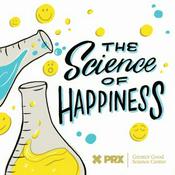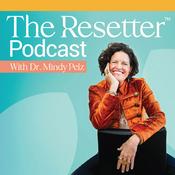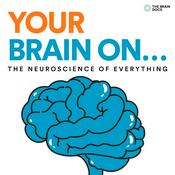289 episodes
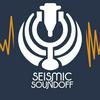
The Tools, People, and Moments That Built a Geophysics Career
2025/12/18 | 31 mins.
“Models are still the bread and butter in gravity and magnetics interpretation. Interpreters still have to condition the data properly, and that's half technical, half art.” Betty Johnson shares how her early career in gravity and magnetics grew from curiosity, hands‑on learning, and rapidly changing technology. She explains how potential field methods remain valuable for addressing energy, water, and climate challenges because they are affordable, scalable, and deeply rooted in Earth’s history. Her reflections underscore the importance of high-quality data, solid fundamentals, and ongoing learning. KEY TAKEAWAYS > Gravity and magnetics remain essential because they are cost‑effective, scalable, and useful across many energy and environmental applications. > Strong fundamentals in physics, geology, and modeling help interpreters make better decisions and collaborate across disciplines. > Good data, field experience, and continuous learning are critical for building a long and impactful geophysics career. LINKS * Read "The Meter Reader—The tools of the trade in gravity and magnetics, 1978–1988" at https://doi.org/10.1190/tle44090738.1 * Elizabeth A. Johnson, "Gravity and magnetic analyses can address various petroleum issues" at https://doi.org/10.1190/1.1437844 * Elizabeth A. E. Johnson, "Use higher resolution gravity and magnetic data as your resource evaluation progresses" at https://doi.org/10.1190/1.1437846 THIS EPISODE SPONSORED BY STRYDE STRYDE enables high-resolution subsurface imaging that helps emerging sectors such as CCS, hydrogen, geothermal, and minerals de-risk and accelerate exploration - delivered through the industry’s fastest, most cost-efficient, and agile seismic solution. Discover more about STRYDE at https://stryde.io/what-we-do.

The Awards That Shape Geophysics and Why They Need You
2025/12/11 | 23 mins.
“Your nomination might be the only way their work is recognized at the level it deserves. The Honors and Awards program is powered by our members and only succeeds when we take the time to lift up one another.” Maurice Nessim explains why SEG Honors and Awards are essential for recognizing scientific, professional, and social contributions in applied geophysics. He shares how member nominations ensure a diverse and meaningful set of candidates and encourages everyone to participate before the January 1 deadline. He also highlights the value of attending the IMAGE ’26 ceremony to celebrate the awardees and learn from their achievements. Nominate a colleague by 1 January, 2026 at https://seg.org/resources/honors-and-awards/. KEY TAKEAWAYS > SEG Honors and Awards rely on member nominations to recognize impactful scientific, professional, and humanitarian contributions. > Recognition strengthens careers, elevates organizations, and encourages innovation across applied geophysics. > Attending the IMAGE ’26 ceremony supports awardees and helps the community learn from their work. GUEST BIO Maurice Nessim is the Founder, CEO, and Chairman of Greener Cleaner Cooler Globe and currently serves as Chair of the SEG Honors and Awards Committee. He brings several decades of leadership in earth science and energy, applying that expertise to advance medical imaging through his work with Ultrasound Associates. His career includes serving as a Board Director at TGS, where he guides strategy and innovation across the geoscience and energy sectors. With more than thirty years in geophysics, he has consistently championed excellence and forward‑looking solutions. His work reflects a deep commitment to using scientific progress for societal benefit. Complete show notes at https://seg.org/podcasts/episode-280-the-awards-that-shape-geophysics-and-why-they-need-you/.

Data, Insight, and Risk in Modern Geoscience
2025/12/04 | 33 mins.
"Sustainability is about reliance and resilience. Our focus needs to be on how systems remain reliable over time." Céline Gerson shares how Fugro is reshaping its business to focus on resilience, adaptability, and sustainability. She explains the importance of critical minerals, coastal resilience, and digital transformation for the future of geophysics. Her insights highlight how innovation, respect, and collaboration can help geoscientists succeed in a rapidly changing world. KEY TAKEAWAYS > Innovation often emerges during times of crisis, and companies can use downturns to launch new technologies and approaches. > Applied geophysics plays a direct role in climate resiliency projects, from strengthening coastal infrastructure to modeling storm surge impacts. > Transparency about data limitations and involving diverse teams in decision-making strengthens risk management and builds trust in geoscience recommendations. GUEST BIO Céline Gerson is the Group Director Americas at Fugro and President of Fugro USA. With over 25 years of experience, Céline has a proven record of successfully growing complex technical businesses across various industries. Before joining Fugro, Céline served as Vice President, Global Account Director for Schlumberger. She was particularly focused on energy transition, sustainability, and digital transformation. Before that, she was President of Schlumberger Canada. Along with being a Harvard Business School Alumna, Céline holds a Bachelor’s degree from the European University of Brussels and a Juris Doctorate from the University of Houston. THIS EPISODE SPONSORED BY STRYDE STRYDE enables high-resolution subsurface imaging that helps emerging sectors such as CCS, hydrogen, geothermal, and minerals de-risk and accelerate exploration - delivered through the industry’s fastest, most cost-efficient, and agile seismic solution. Discover more about STRYDE at https://stryde.io/what-we-do.

Fiber Optics, DAS, and the Future of Geophysical Monitoring
2025/11/20 | 21 mins.
"Sometimes the traditional methods are way more effective or efficient in handling certain things. To succeed in this new paradigm, we need to build on our strong fundamentals and progress further." Ivan Lim Chen Ning shares how data-driven methods are reshaping geophysics by challenging traditional workflows and opening new possibilities. He highlights the role of AI, machine learning, and fiber-optic sensing in improving seismic interpretation, imaging, and monitoring. His insights show how combining strong fundamentals with modern digital tools can help geophysicists solve problems more effectively. Read the September issue of TLE about data-driven geophysics at https://library.seg.org/toc/leedff/44/9. KEY TAKEAWAYS > AI and data-driven tools open new paths. They help geophysicists move beyond traditional workflows to find faster and simpler solutions. > Fiber-optic sensing changes monitoring. DAS provides continuous well data, replacing point sensors and revealing signals directly. > Strong fundamentals still matter. Success comes from combining proven geophysical methods with modern digital skills. GUEST BIO Ivan Lim Chen Ning is an Earth Scientist – Fiber Optics at Chevron, where he analyzes Distributed Fiber Optic Sensing (DFOS) data and develops real-time algorithms for field applications. He applies deep learning and signal processing to improve DFOS workflows, advancing distributed acoustic sensing in the energy industry. A member of Chevron’s Emerging Leader 2024 cohort, Ivan is recognized for solving cross-disciplinary challenges and driving innovation to help secure energy for the future.

The Role of Drones in Modern Geophysical Exploration
2025/11/13 | 16 mins.
"The applications of drones in geophysics have increased dramatically in the last 10 years. Drones can be said to be an established platform for geophysical measurement methods." Drones have quickly moved from experimental tools to essential platforms in geophysics. Johannes Stoll explains how advances in sensor miniaturization, AI navigation, and regulatory clarity are enabling wide-area surveys that deliver better data at lower costs. He highlights how collaboration across disciplines and countries is driving innovation, opening new opportunities for energy transition projects and subsurface modeling. KEY TAKEAWAYS > Drones are now established tools for geophysical surveys, especially in magnetics and electromagnetics. > Sensor miniaturization and AI navigation are enabling wider, more precise, and cost-effective measurements. > Collaboration between industry, academia, and government is critical to advancing drone-based geophysics. LINKS * UAVs and Drones in Geophysics (1-3 December 2025): Read the summit topics, technical program, explore the virtual showcase information, register to attend, and more at https://seg.org/calendar_events/uavs-and-drones-in-the-geophysics/. GUEST BIO Dr. Johannes Stoll is the founder and CEO of Mobile Geophysical Technologies (MGT). With a background in geophysics and electrochemistry, he has held multiple roles across the Oil & Gas industry as well as in leading research institutions. Bringing more than 30 years of experience as an active exploration geophysicist, Dr. Stoll combines scientific expertise with entrepreneurial vision to drive innovation in mobile geophysical solutions.
More Science podcasts
Trending Science podcasts
About Seismic Soundoff
Listen to Seismic Soundoff, Hidden Brain and many other podcasts from around the world with the radio.net app

Get the free radio.net app
- Stations and podcasts to bookmark
- Stream via Wi-Fi or Bluetooth
- Supports Carplay & Android Auto
- Many other app features
Get the free radio.net app
- Stations and podcasts to bookmark
- Stream via Wi-Fi or Bluetooth
- Supports Carplay & Android Auto
- Many other app features


Seismic Soundoff
download the app,
start listening.



